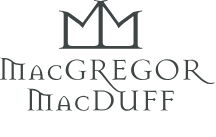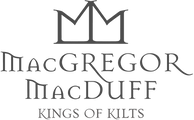A kilt on its own is a marvel of expert craftsmanship. Everything about it, the tartan design, the process of milling the fabric, the perfectly folded pleats, it’s a truly masterful piece of clothing and the fact that it’s known around the world is testament to that. However, a kilt by itself isn’t complete and the various accessories that go with it are just as important to fully achieve the highlandwear look.
What was the purpose of a sporran?
Historically, a Sporran was used to hold grain or any other items the common highlander would need as he went about his day. It was an important tool as kilts didn’t have any pockets. Kilts still don’t have any pockets and while sporrans are still useful for carrying items like your wallet, hip flask, and phone, they are slightly more symbolic than practical.
There are three types of Sporrans, Day, Semi-Dress, and Dress. The day sporran usually has a simple, all-leather construction with subtle embossed designs. Day sporrans are the most casual of the three types and are used for very casual occasions. The next is Semi-dress sporrans which are also mainly made from leather but will have a fur front and slightly more decorative designs. These sporrans are very versatile but are mainly worn for events that are semi-formal, like a ceilidh. Dress sporrans are the most formal and are worn to events like weddings and Burns suppers. The Dress sporran's most notable difference from the other two is the presence of a cantle instead of a fold and button to close the sporran. The cantle is metal and usually highly ornate with Celtic or Scottish designs.

Why wear a Kilt Pin?
Kilt Pins are fastened to the lower right-hand side of the kilt apron. The best placement for a kilt pin is on a prominent line of the tartan design. Kilt pins aren’t just decorative, they also add a little bit of weight to the apron of the kilt to keep it hanging straight.
There is a huge range of options when it comes to choosing a kilt pin for your kilt and it’s totally up to you. There are traditional options like the Bruce Sword and Scottish Thistle designs or you could choose to go contemporary with a Heathergem or Horn design. There are so many options to choose from that you really should spend some time looking at all your options. Just try and match the kilt pin to your other accessories. If you have an antique finish cantle on your sporran, try and choose an antique finish kilt pin. If you are wearing brown leather brogues, maybe choose a similar coloured wooden kilt pin.

Why have a sgian dubh?
Traditionally, a sgian dubh would have been the everyday knife that was small enough to be carried in a pouch or sporran. Today, sgian dubh’s are decorative and worn in the top of the sock on your dominant side, so if you are right-handed, you would wear it in the right sock.
There are many different types of sgian dubhs to choose from, they all have their own design and are made from different materials and colours. Most come with a stainless steel blade which is dulled. You can also get replica options that don’t have a blade at all. These are great for people who are traveling to places that are less familiar with traditional Scottish dress and who may be uncomfortable with you carrying a real blade. You can also get ones that have a bottle opener on the blade which always goes down well at parties. The blades are also a great place to get a message engraved which make them perfect as gifts for groomsmen or as mementos for special occasions like a wedding.
How to wear your Brogues, Socks and Flashes in a kilt outfit
A highlandwear outfit isn’t complete without your legs being suitably dressed. Working from the bottom up, your brogues need careful consideration as they help tie the whole outfit together. The first thing you need to decide on is whether you want to wear ghillie brogues or day brogues. Ghillie brogues have no tongue and long lace whereas day brogues do have a tongue and do have long laces. Both are great options but the ghillie brogues are considered more formal. Both also come in a range of colours and there is even the option of tartan brogues, but these are usually only as day brogues as the tartan looks best on a tongue. Whichever colour you choose, make sure it matches your accessories, namely your sporran. It would look best, for example, if you wore brown brogues with a brown sporran and the same goes for a black sporran.
You should match your socks to your jacket and the same goes for the flashes if you choose a block colour instead of tartan. If it’s tartan flashes you choose, make sure they are the same tartan as your kilt. The flashes are secured by a garter about three fingers below your knee and flashed themselves face outwards. The top of your sock is then folded down to hide the garter and only the bottom half of the flashes should be visible.

Cufflinks to accessorise your kilt outfit
Cufflinks are a great way to add a personal touch to your outfit. You can choose to go traditional with something Scottish like Thistle Cufflinks or rustic with a pair of Round Wooden Cufflinks or even show your colourful side with Heathergem Cufflinks. You do however want to keep an eye on your outfit coordination, for example, if the rest of your outfit has chrome accessories, don’t choose antique cufflinks. Whatever you choose, make sure you like them as these will be the one accessory that you personally will see the most of.
Why wear a Plaid?
The Plaid is arguable the most traditional piece of highlandwear as it symbolises the top half of the great kilt which has been lost over the centuries. A plaid is usually only worn by a dignitary at a formal event, like a groom at his wedding. The plaid is worn over the left shoulder and hangs down the back of the outfit. A plaid should also be made from the same tartan design as the kilt so everything matches.
The best time to buy a plaid is at the same time you are buying the kilt. This is so both can be made from the same run of tartan fabric. Depending on where the tartan is milled, there may be some slight differences in the design which can be noticeable if the plaid and kilt tartan were made in different places. It’s not the biggest problem but one worth noting, especially if it is to be worn at your wedding. If you already have a kilt and want a plaid, bring your kilt into one of our stores and we will determine which mill the tartan comes from and will be able to make your plaid using tartan from the same place.
Neckwear for your Kilt outfit
As for neckwear, when wearing an Argyll and Prince Charlie jacket, you should opt for a ruche tie or bow tie. Ruches come in a variety of different colours and bow ties are available in tweed or tartan to match your kilt. When wearing a tweed jacket, you can choose to wear a bow tie or a straight tie. Straight ties are also available in tweed, tartan and satin colours.
There are a lot of different elements that go into a highlandwear outfit which makes buying one so much fun. Once all your choices are made, your outfit will tell a little story about who you are, your preferences and personal style. If you’d like any help with our range of highlandwear accessories, please feel free to get in touch with us at info@macgregorandmacduff.co.uk

